
How to Stay Safe with Ladders
Elevate Your Safety: Why Ladder Safety is Non-Negotiable for Contractors
As contractors, ladders are indispensable tools. From reaching high ceilings to accessing roofs, they're a daily necessity on almost every job site. But with that necessity comes a significant responsibility: ensuring the safety of everyone who steps onto a rung.
The statistics are stark. Falls from ladders are a leading cause of injuries and fatalities in the construction industry. These incidents don't just result in pain and suffering; they lead to lost workdays, increased insurance premiums, potential legal battles, and a damaged reputation.
So, how do we mitigate these risks and create a culture of uncompromising ladder safety?
The Core Pillars of Ladder Safety:
Before we even think about climbing, a few fundamental principles must be in place:
Choose the Right Ladder: Not all ladders are created equal. Ensure you're using the correct type (step, extension, multi-position) and duty rating for the task at hand and the weight it needs to support (including tools and materials).
Inspect Before Every Use: This is non-negotiable. Look for loose rungs, cracked side rails, damaged feet, and any other signs of wear and tear. If it's compromised, tag it "out of service" and get it repaired or replaced.
Proper Placement is Paramount:
Stable Surface: Always place the ladder on a firm, level surface. Uneven ground is an accident waiting to happen.
The 4:1 Rule: For extension ladders, the base of the ladder should be placed one foot away from the wall for every four feet of height to the point where the ladder touches the support.
Secure the Top: The top of the ladder should extend at least three feet above the landing surface if you're accessing a roof or elevated platform.
Maintain Three Points of Contact: Always keep three points of contact with the ladder (two hands and one foot, or two feet and one hand) when ascending or descending.
Don't Overreach: Move the ladder! Reaching too far can easily shift your center of gravity and cause the ladder to tip.
Clear the Area: Ensure the base and top of the ladder are clear of obstructions and potential trip hazards.
The Overlooked Hazard: Ladder Movement
Even when following all these guidelines, a significant danger remains: unintended ladder movement. A ladder can slip, slide, or shift at the most critical moment, leading to a catastrophic fall. This is where innovation truly makes a difference.
Introducing Ladder Safety
Ladder Stabilizers (Standoffs):
Click on the photo to purchase or learn more
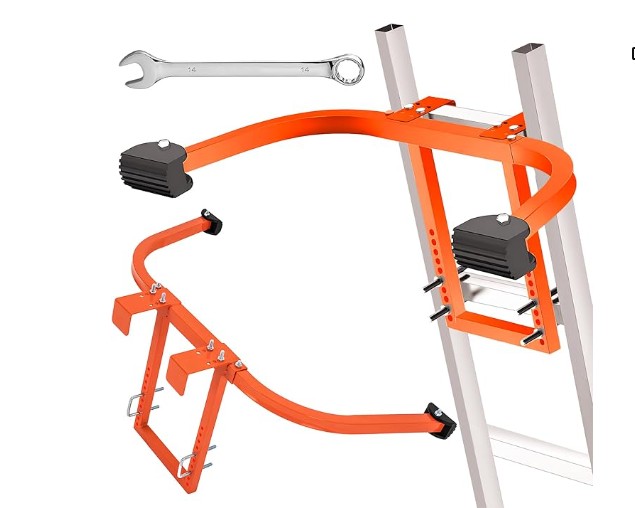
Purpose: These devices attach to the top of an extension ladder and extend outwards, creating a wider base and holding the ladder away from the wall or surface. This provides greater stability, prevents damage to gutters or siding, and allows access to areas like windows or roof edges.
Types:
Wall Standoffs: Common U-shaped or V-shaped attachments that provide a fixed distance from the wall.
Adjustable Standoffs: Allow for varying standoff distances and span widths to accommodate different structures and work areas (e.g., corners, uneven surfaces).
Roof Standoffs/Hooks: Specifically designed to hook over a roof ridge, providing secure footing for work on sloped roofs.
Key Features: Often include non-marring pads to protect surfaces, and some can feature quick-release mechanisms for easy attachment/detachment.
Ladder Levelers:
Purpose: These are attached to the bottom of the ladder legs and allow for individual leg adjustments to compensate for uneven ground, stairs, or sloping terrain. They ensure the ladder remains level and stable, preventing tipping.
Types:
Manual Adjustment: Require manual adjustment and locking of each leg to the desired height.
Automatic Levelers: Some advanced models automatically adjust to the terrain, offering quick and effortless leveling.
Integrated Levelers: Built directly into some ladder models.
Key Features: Often feature swivel feet with aggressive treads or ice picks for varied surfaces.
Ladder Grips/Anti-Slip Feet and Bases:
Click in the photo to learn more:
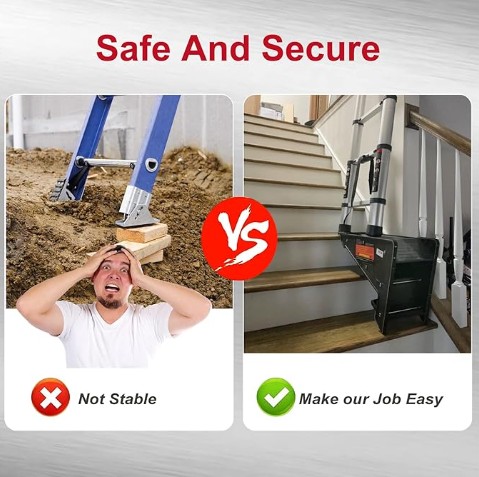
Purpose: These are pads, mats, or specialized feet placed under the ladder's base to increase friction and prevent slippage on smooth, wet, or otherwise hazardous surfaces (e.g., concrete, tile, decking, grass).
Types:
Rubber/Non-Slip Pads: Simple, durable rubber mats or pads that create a high-friction surface.
Ladder Spurs: Attachments with spikes or teeth designed to dig into soft ground (like grass or dirt) for better anchorage.
Specialized Boots/Feet: Replacement feet for ladder legs made of high-grip materials or with enhanced designs for specific challenging surfaces.
Key Features: Durability, weather resistance, and ability to conform to various ground conditions.
Ladder Anchoring Systems (Ground/Structure Anchors):
Click on photo below to learn more about Ladder Lock Pro
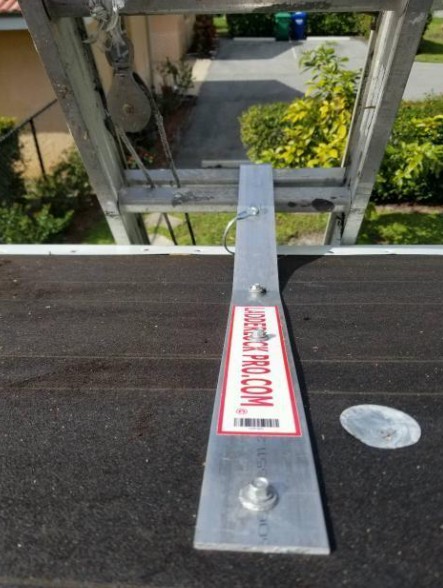
Purpose: These systems physically secure the base or top of the ladder to the ground or an adjacent structure, preventing both sliding and tipping.
Types:
Ground Stakes/Spikes: Driven into the ground to anchor the ladder's feet.
Straps/Clamps: Used to tie off the top or bottom of the ladder to a fixed object (e.g., a wall anchor, a structural beam, a railing).
Proprietary Ladder Locks: Devices like your Ladder Lock Pro fall into this category. They are specifically designed to quickly and securely clamp or brace the ladder against a surface or to prevent side-to-side movement, offering a more robust solution than simple tie-offs.
Roof Anchors: Temporary or permanent anchors installed on roofs to tie off fall protection equipment or to secure the ladder itself.
Key Features: High holding strength, ease of deployment, and compatibility with various surfaces.
Ladder Jacks & Platforms:
Click on the ladder jack photo to learn more
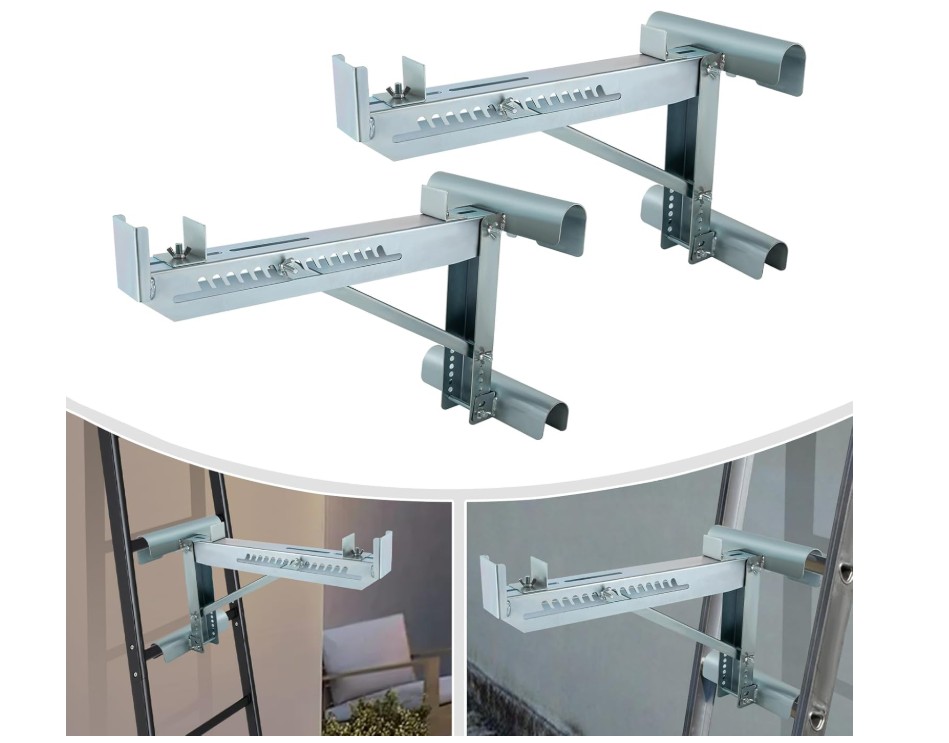
Purpose: While not solely "securing" the ladder, these accessories use the ladder to create a secure work platform. Ladder jacks attach to extension ladder rungs to support scaffolding planks, providing a wide, stable work area.
Why they're secure: They convert a climbing tool into a stable work surface, reducing the need for repeated ladder repositioning and minimizing the risk of overreaching.
Scaffolding:
Here is the safest and best value 660 lbs Electric Adjustable LIfting Scaffolding with Customizable Height and Stable Support.
Click on this photo to see more about the customizable scaffolding for safety
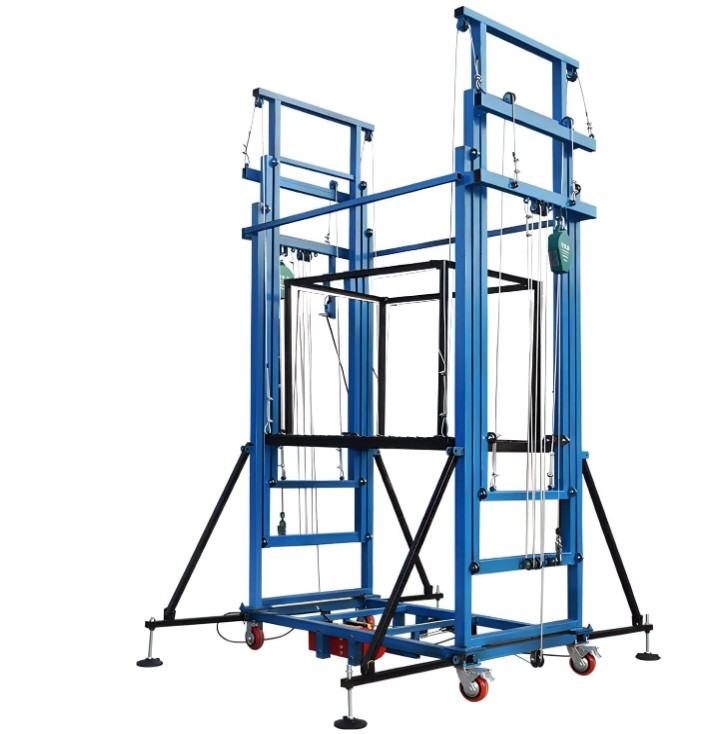
Purpose: While primarily for extending reach or lifting materials, these can contribute to safety by reducing the need for overreaching or manual lifting of heavy items up a ladder, which can destabilize it.
When choosing any ladder secure product, always consider the specific task, the type of ladder being used, and the environment. No single product is a magic bullet; a combination of appropriate tools and strict adherence to safety protocols provides the best protection.
